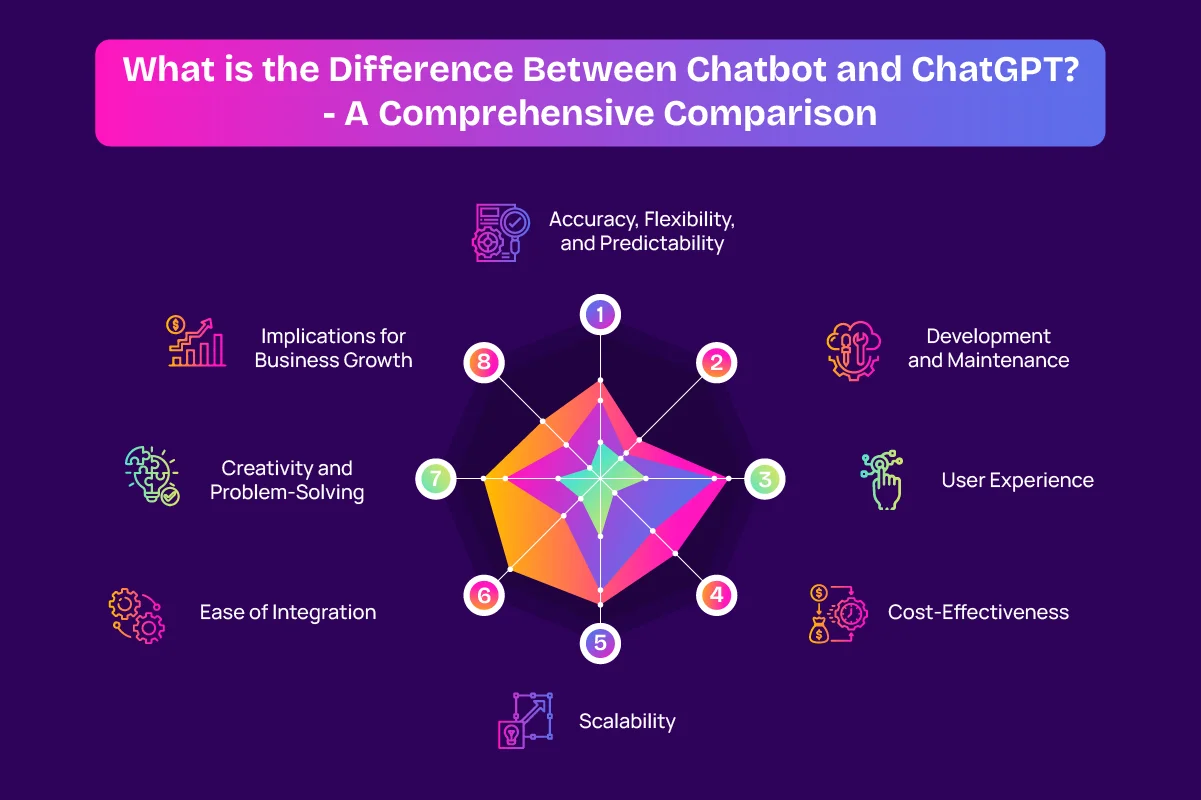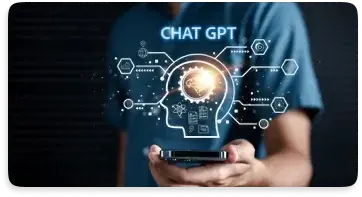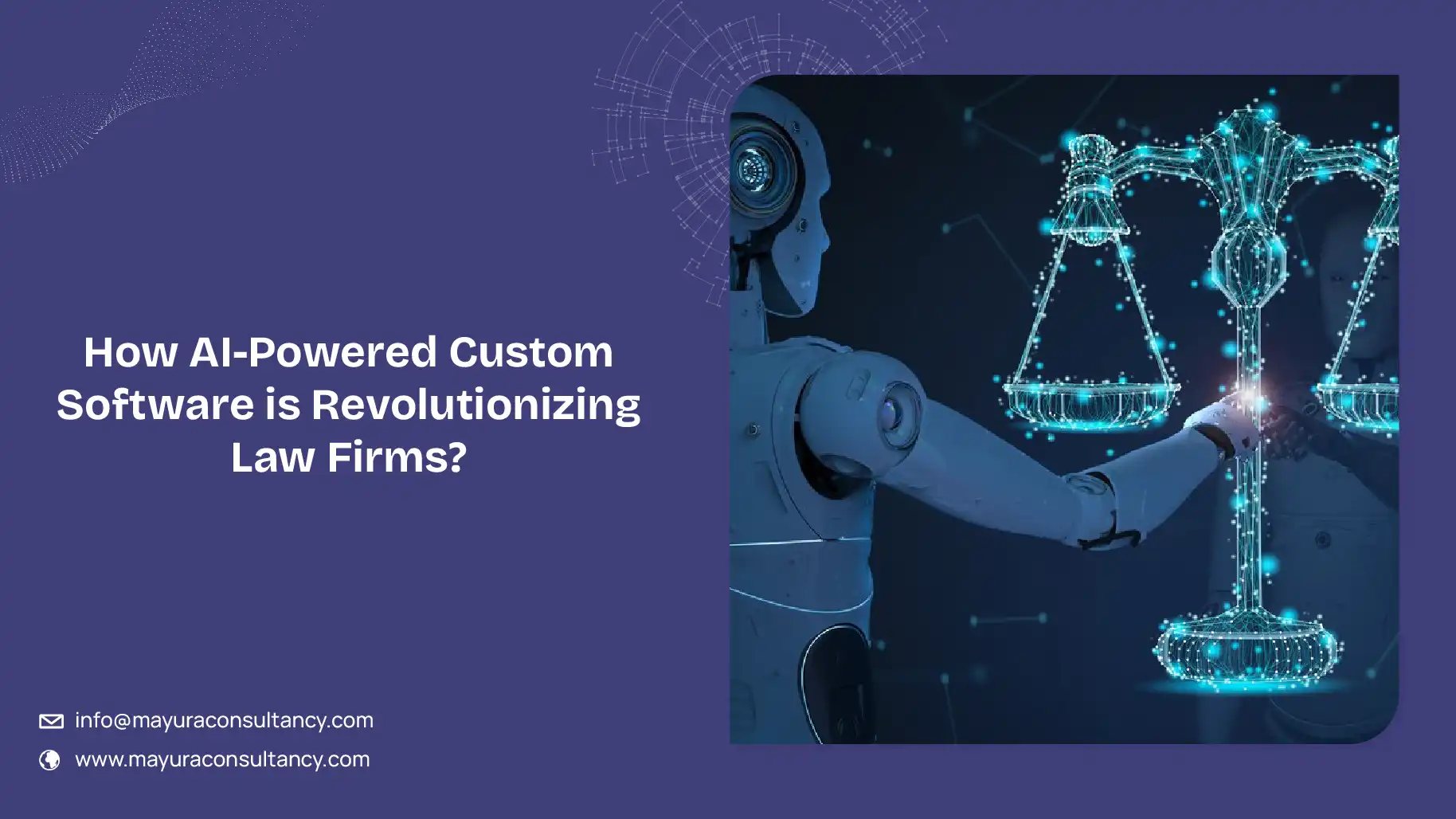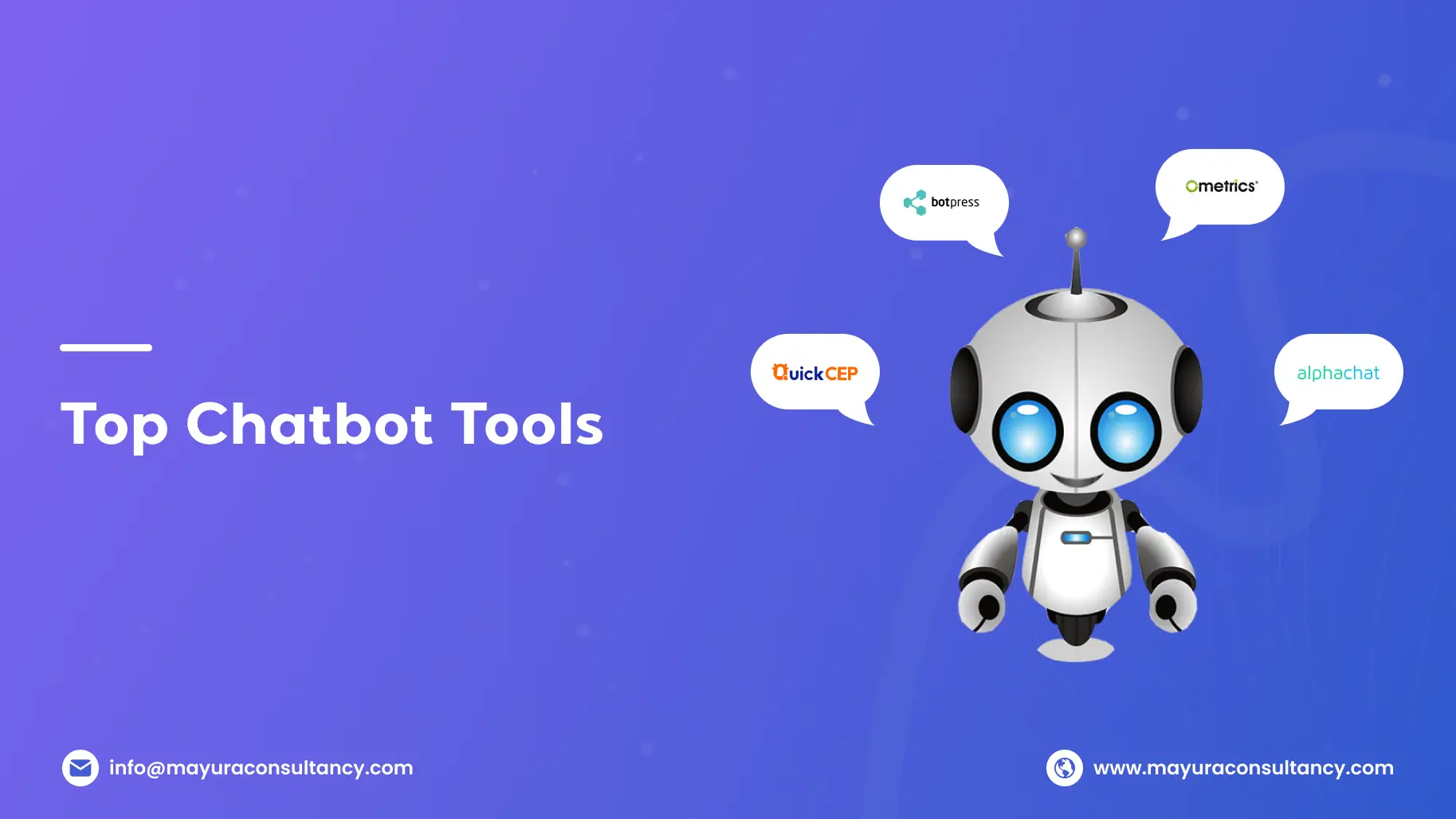Have you ever wondered why some chatbots feel robotic while others offer human-like conversations? The secret lies in technology. While standard chatbots handle structured queries, ChatGPT adds intelligence making you feel that you are chatting with a human being.
If you want to use a chatbot to improve customer service, understanding the difference between these two is essential to make the right choice. In this blog, we will decode what is the difference between Chatbot and Chatgpt to help you select the best conversational tool for your business.
This Article Contains:
What Are Chatbots and How Do They Work?
A chatbot is an application that imitates human conversation. It uses text or voice-based interactions to communicate with users and address their queries. While advanced chatbots leverage artificial intelligence to generate context-based responses, simpler chatbots use pre-programmed rules and keywords to respond, which means they don't use AI to understand and respond to user input. Chatbots can provide 24/7 customer support and automate routine tasks.
Understanding ChatGPT: How Does It Work?
ChatGPT is a generative AI-powered chatbot that utilizes machine learning algorithms and deep learning techniques to understand human language and generate content based on input. The tool is trained on a vast amount of data, enabling it to create responses in various contexts. ChatGPT can answer questions and write content such as articles, essays, social media posts, etc.
What is the Difference Between Chatbot and ChatGPT? - A Comprehensive Comparison
According to a Statista report, 36% of shoppers in 2024 said their purchase decisions were always influenced by chatbots, while another 25% stated that chatbots had some influence on their shopping decisions. But which chatbot should you use - ChatGPT or a standard chatbot? Let’s understand the difference between chatbot and ChatGPT on various parameters to make an informed choice.

1. Accuracy, Flexibility, and Predictability
Chatbots are designed with specific intents that rely on predefined scripts and rules to respond to user queries. Chatbots can be highly accurate within their defined scopes, but they struggle with unknown or open-ended questions.
On the other hand, ChatGPT leverages natural language processing (NLP) and machine learning techniques to provide more flexible and predictable responses according to the inputs. ChatGPT can understand the context and nuances, making it more effective at handling complex or multi-step conversations.
2. Development and Maintenance
Chatbots require customized development as every business has different requirements. The backend logic and scripts need to be created from scratch, which can be time-consuming and costly. Chatbots also need regular software maintenance and support services depending on complexities and upgrade requirements.
ChatGPT integration requires less manual configuration as it leverages pre-trained AI data. The initial setup may need expertise, but ongoing updates are minimal, making it a better option for businesses with evolving customer demands.
3. User Experience
With effective UI/UX design, rule-based chatbots can provide a more structured and guided user experience, suitable for simple queries. However, chatbots may struggle to deliver personalized responses and answer complex and open-ended queries, leading to user frustration at times.
ChatGPT, powered by natural language processing capabilities can offer more human-like and contextual responses, creating a truly engaging and personalized user experience.
4. Cost-Effectiveness
Chatbot development is comparatively cost-effective and requires lower initial investment, especially when used for simple use cases. However, chatbots may require more ongoing maintenance and updates, which can add to their overall cost.
ChatGPT can be more expensive to integrate and customize, but it provides more long-term value and cost savings by significantly reducing the need for human customer support agents while improving customer satisfaction.
5. Scalability & Adaptability
Scaling Chatbots can be challenging, especially if they require extensive customization. They can be effective in specific use cases but lack adaptability in dynamic business environments.
However, ChatGPT's cloud-based infrastructure and AI-powered model make it highly scalable and suitable for businesses anticipating faster growth.
6. Ease of Integration
Integrating chatbots with existing systems becomes easier if they rely on standard APIs or protocols. However, ensuring seamless data exchange may require some customization.
Conversely, ChatGPT integration can be a little sophisticated, and you may need expert Generative AI integration services for quick deployment.
7. Creativity and Problem-Solving
Chatbots follow a scripted path, which limits their ability to think creatively or find solutions to complex problems, making them less effective and user-friendly.
In contrast, ChatGPT is trained on vast data and natural language understanding capabilities to generate innovative responses and solutions based on the instructions. This feature helps in providing insightful responses and addresses complex questions effectively, improving user engagement and satisfaction.
8. Implications for Business Growth
Chatbots drive business growth by providing round-the-clock customer support and reducing operational costs, making them ideal for improving efficiency.
ChatGPT, on the other hand, goes beyond automated and pre-defined responses by providing personalized interactions, handling complex queries efficiently, and automating content creation. By integrating ChatGPT, businesses can differentiate themselves with conversational chatbots, streamline customer service, and enhance overall productivity.
Which One Should You Choose for Your Business - A Conventional ChatBot or ChatGPT?
Chatbot tools offer many benefits for businesses, such as 24/7 availability, cost savings, and enhanced customer experience. However, when evaluating the difference between chatbot and ChatGPT, and picking the better option, companies must analyze their requirements.
If you need to provide a structured interaction, such as order tracking, appointment scheduling, etc., a simple chatbot is an ideal solution. However, if you want to provide a personalized experience or tackle complex user queries, ChatGPT is the better option.
MCS specializes in AI chatbot development and ChatGPT integration to help you create the right solutions for your business needs. Book a consultation to discuss your project.
Frequently Asked Questions
ChatGPT stands for Chat Generative Pre-Trained Transformer, a chat tool that can answer queries and generate text based on input.
Yes, ChatGPT is a large language model (LLM) developed and maintained by OpenAI. It leverages advanced machine learning techniques to answer user queries and generate texts based on the inputs, making it highly effective for content generation, dynamic conversation, and problem-solving.
Generative AI-powered chatbots, like ChatGPT can mimic human conversation and provide personalized answers, improving customer engagement and handling complex queries efficiently.
Yes, ChatGPT can be tailored to meet your specific business requirements. It can be trained on industry and business-specific data to ensure it delivers accurate responses aligned with your brand's tone.
MCS is the best chatbot development company with expertise in developing chatbots for diverse industries and business sizes. Whether you want to develop a simple or AI chatbot, MCS leverages top chatbot tools to build tailored chatbots for your business needs.
The time needed to build a chatbot depends on its complexity, features, and integration requirements. Developing a basic chatbot may take a few weeks, while AI-powered and feature-rich chatbot can take several months. Contact us to get an estimated timeline based on your project requirements.
MCS provides comprehensive chatbot development services, from planning and design to development and post-deployment maintenance.





